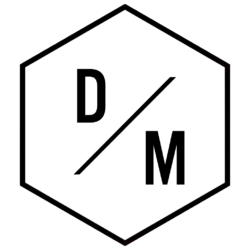In the increasingly competitive landscape of project management and collaboration tools, monday.com has distinguished itself with its innovative AI Risk Insights feature. As organizations grapple with the complexities of managing workflows and mitigating risk, the blend of AI-powered analytics and integrated business intelligence offered by monday.com stands out as a strategic asset. With the rise of workflow automation and sophisticated data analysis tools, the ability to preemptively spot and manage risks is no longer a luxury but a necessity. monday.com’s AI Risk Insights feature is uniquely positioned to deliver actionable risk assessment across diverse project portfolios, redefining how teams approach project management and decision-making in 2025 and beyond.
How monday.com’s AI Risk Insights Revolutionize Project Management Efficiency
Project management in 2025 demands agility and precision. monday.com’s AI Risk Insights feature equips businesses with automated risk detection that continuously analyzes data from multiple project boards to surface potential threats before they escalate. This proactive stance is vital in today’s fast-paced environments where oversight gaps can result in costly missteps.
At the core of this advancement is the seamless integration of AI algorithms capable of synthesizing vast datasets gathered from workflows, collaboration tools, and customer relationship management (CRM) modules. The platform’s comprehensive approach enables users to identify risk factors related to budget overruns, missed deadlines, resource constraints, and dependency conflicts.
Consider a mid-sized technology company juggling a portfolio of product launches. Traditional risk assessment methods may catch issues only after they materialize, causing delays and financial losses. However, with monday.com’s AI Risk Insights, the system autonomously scans project parameters daily and flags risks such as potential bottlenecks or resource shortages, enabling project managers to adjust plans promptly.
- Continuous Risk Monitoring: Real-time AI assessment offers uninterrupted vigilance across all project boards.
- Analyse prédictive : Machine learning models identify trends indicative of emerging risks.
- Cross-Functional Data Integration: Aggregation of inputs from task management, CRM, and communication tools optimizes context-driven insights.
- Automated Alerts and Recommendations: Empowering teams with prescriptive guidance to mitigate risks effectively.
This level of project management automation fosters not only risk reduction but also enhances team collaboration by ensuring transparency and early intervention. Tools that merge AI with intuitive user interfaces help organizations transform raw data into prioritized actionable intelligence.
| Fonctionnalité | Avantage | Impact on Project Management |
|---|---|---|
| AI-Driven Risk Detection | Identifies risks before they escalate | Minimizes delays and cost overruns |
| Workflow Automation Integration | Streamlines task management and decision-making | Improves productivity and accountability |
| Data Analysis and Visualization | Presents complex data intuitively | Facilitates faster team alignment and action |
| Centralized Collaboration Tools | Supports seamless communication across departments | Enhances project coordination and reduces silos |
For organizations looking to deepen their understanding of AI-powered project risk tools, a comprehensive perspective can be found in resources like AI Insights for Microsoft Management, which expands on integrating AI into business workflows effectively.
Distinctive Marketplace Differentiation of monday.com’s AI Risk Insights
The AI-enabled solutions market is notably crowded, with numerous providers offering functionalities that overlap in scope. What differentiates monday.com’s AI Risk Insights from other offerings is its deep embedding within an all-in-one platform that combines project management, workflow automation, and CRM.
This contrasts with standalone risk assessment tools that require complex integrations or lack context sensitivity. monday.com’s architecture allows for seamless data fusion across different operational areas, which is critical for holistic risk assessment.
Moreover, monday.com emphasizes user-centric design to ensure AI insights are comprehensible and actionable. The system avoids overwhelming teams with raw data or false positives by implementing intelligent filtering and prioritization.
Here are the main factors that contribute to this marketplace differentiation:
- Integrated Business Intelligence: Continuous data flow across modules powers more accurate risk identification.
- Contextual Awareness: AI understands project nuances, such as dependencies, timeframe constraints, and team dynamics.
- Customizable Risk Parameters: Users can tailor detection sensitivity to suit specific project types and organizational risk appetite.
- Robust Automation Ecosystem: Automated workflows ensure timely corrective actions without manual intervention.
- Scalable for Diverse Business Sizes: From startups to enterprises, monday.com adapts to varied collaboration needs and project complexities.
For readers interested in further technical reviews of AI advancements in cybersecurity, which highlights parallels in risk detection approaches, refer to this detailed study.
Enhancing Collaboration and Workflow Automation Through AI-Powered Risk Insights
Effective collaboration and streamlined workflow automation are pivotal to maximizing the benefits of AI Risk Insights. monday.com’s ecosystem not only detects potential risks but also enables teams to address these with minimal friction by embedding risk intelligence directly into daily project activities.
For example, risk alerts can trigger automatic workflow adjustments or resource reallocations, ensuring prompt mitigation efforts. This integration reduces the need for manual oversight and accelerates decision-making processes.
- Automated Task Reassignment: Shifts resources to critical areas identified by risk analytics.
- Collaborative Risk Review Sessions: Facilitates cross-team discussions prompted by AI-generated reports.
- Inbuilt Communication Channels: Supports real-time feedback and status updates linked to risk metrics.
- Progress Tracking and Reporting: Keeps stakeholders informed with data-driven updates consolidated in dashboards.
This cohesive approach shapes a resilient project culture where potential setbacks are addressed proactively. The synergy between workflow automation and AI risk assessment potentializes business agility and operational continuity.
| Collaboration Feature | Intégration de l'IA | Résultat |
|---|---|---|
| Alertes en temps réel | Instant risk notifications linked to project tasks | Accelerates response time to threats |
| Optimisation des ressources | AI-driven analysis of team capacity and skillsets | Ensures right talent allocation |
| Dynamic Workflow Adjustment | Automated updates responding to risk changes | Maintains project momentum despite uncertainties |
| Integrated Communication Tools | Facilitates context-rich discussions | Improves coordination and consensus building |
More on how AI transforms collaboration tools can be explored at this article, detailing advancements in digital teamwork methodologies.
Leveraging Data Analysis and Business Intelligence for Superior Risk Assessment
One of the defining strengths of monday.com’s AI Risk Insights lies in its robust data analysis capabilities. By leveraging business intelligence frameworks within the platform, companies gain a unified view of risk exposure linked to performance metrics and financial indicators.
This comprehensive analytical layer elevates risk assessment beyond mere problem identification toward predictive and prescriptive insights optimized for actionability. By contextualizing risks relative to business objectives, monday.com empowers decision-makers to balance opportunity and caution effectively.
Concrete examples include:
- Financial Risk Correlation: Identifying budget patterns that historically precede overruns.
- Resource Allocation Metrics: Analyzing team workload against risk hotspots.
- Timeline Sensitivity: Flagging schedule slippages with potential cascade effects on dependencies.
- Customer Relationship Risk Zones: Monitoring CRM data to anticipate client-related project vulnerabilities.
| Risk Category | Data Sources | AI Analysis Approach | Impact sur les entreprises |
|---|---|---|---|
| Financial Risk | Budget reports, expenditure tracking | Trend analysis and anomaly detection | Prevents overspending and cash flow issues |
| Operational Risk | Task completion rates, resource logs | Dependency mapping and bottleneck identification | Maintains productivity and deadline integrity |
| Client Risk | CRM feedback, communication logs | Sentiment analysis and engagement scoring | Enables proactive client management |
| Schedule Risk | Timeline data, milestone tracking | Predictive delay alerts | Improves on-time delivery rates |
Those seeking a deeper dive into technical business intelligence applications may find the insights discussed at Enterprise Intelligence with Databricks particularly compelling.
Addressing Emerging Challenges in AI Risk Assessment and Cybersecurity Integration
While monday.com’s AI Risk Insights provide advanced capabilities, the evolving nature of AI presents continuous challenges, especially in cybersecurity. Reliable risk assessment today must account for AI’s unpredictable behaviors, data integrity, and emerging threat vectors within digital environments.
The fusion of AI risk management with stringent cybersecurity practices is essential. monday.com benefits from ongoing research on AI advancements in security protocols, ensuring that risk insights are safeguarded and compliant with regulations. This integration is vital given the increasing reliance on interconnected systems and digital workflows.
- AI Model Validity Checks: Regular evaluation of AI predictions to avoid false positives and negatives.
- Data Privacy Compliance: Ensuring sensitive project data in risk analysis adheres to GDPR and other frameworks.
- Adaptive Threat Detection: Identifying novel attack patterns that could exploit AI-based project management tools.
- User Access Controls: Restricting risk insight functionalities to authorized personnel only.
Staying informed about the latest cybersecurity perspectives on AI risk is critical for IT leaders, with resources such as Experts’ Opinions on AI Developments in Cybersecurity offering comprehensive overviews.


